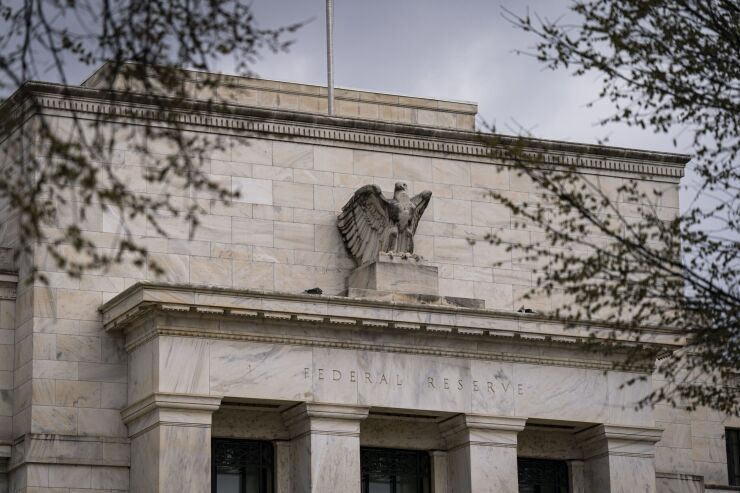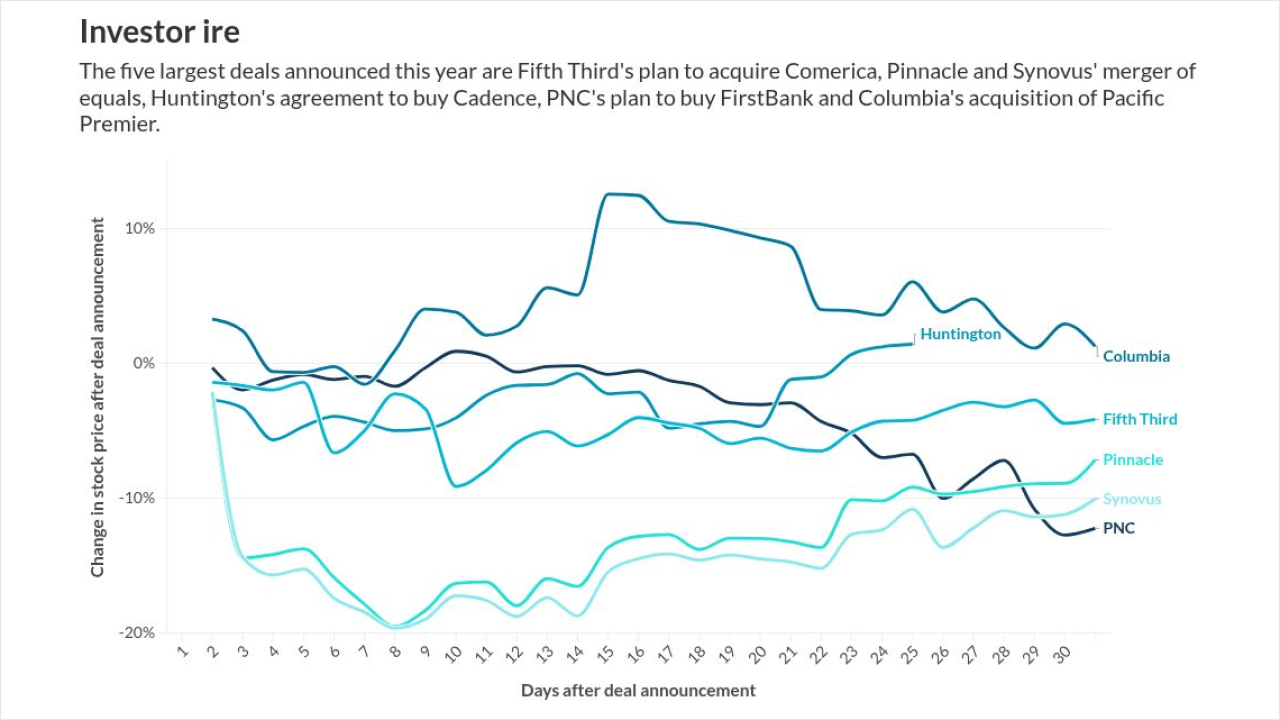
In June, U.S. regulators proposed a targeted reform to the
The immediate effect is to free up balance sheet capacity for institutions like JPMorgan, Wells Fargo and Citi. But the deeper significance lies in what this reform enables: a restoration of capacity for low-risk, high-velocity activities like Treasury intermediation, repo financing and FX swaps. These are not speculative trades. They are flow — the provision of liquidity that makes markets work.
Flow enables price discovery, capital formation and trade execution. It brings steady, dependable liquidity to the system, making markets more resilient to shocks. Under the current SLR regime, these low-risk activities are penalized alongside high-risk exposures. The June 25th proposal corrects that imbalance. It is not a relaxation of prudential standards — banks' overall capital requirements remain intact — but a realignment of capital with function. In doing so, it revives the second pillar of the Volcker Rule: the protection of market making as a public utility.
Paul Volcker understood that financial crises are not only about solvency but also about liquidity. That's why the Volcker Rule had two pillars: Ban proprietary trading, but preserve market making. The first was achieved. The second was — unintentionally — undermined by capital rules like the SLR.
The SLR made no distinction between a Treasury in a matched-book repo and an equity derivative held for directional exposure. Both counted equally against leverage exposure. As a result, flow desks were penalized. The very activities Volcker had sought to protect — client-driven liquidity provision — became uneconomic.
The eSLR reform corrects that distortion. It does not reopen the door to speculative risk-taking. It reopens the pipes through which liquidity can flow. Desks that run matched books and absorb short-term shocks are not a threat to stability — they are its precondition.
Volcker himself made this point clear. In his 2010 Senate testimony, he argued that underwriting and market making were "analogous to commercial lending" — core banking functions, not speculative indulgences.
The June proposal is a restoration not just of the spirit of the Volcker Rule, but also of a deep understanding of the nature of liquidity in American thinking. There has been interest recently in the American Free Banking era (1837 – 1864). As far back as 1858, in Ferry v. Bank of Central New York, the New York Supreme Court acknowledged what every merchant and banker already knew: In a panic, liquidity vanishes — and with it, the ability to meet obligations, no matter how solvent the institution.
"Every dollar of their circulation and the entire deposits is subject to call … yet it is well known that no bank keeps on hand … an amount equal to one tenth of the obligations," the court found.
In effect, the court suspended that hoary chestnut of English common law — contract enforcement — because it understood something deeper: Liquidity comes before law. Volcker understood this too. The eSLR reform doesn't break with his legacy. It completes it.
Critics of the reform argue that it is a form of financial repression — a backdoor attempt to push banks into holding more government debt. With Washington staring down a gaping fiscal hole — thanks in part to the Big Beautiful Bill — some think this reform is just about placing more Treasuries. The proposal, its critics charge, would ease balance sheet constraints for large dealers.
But does this claim hold up under scrutiny?
The historical data are clear: GSIBs have consistently held only about 2% to 6% of the total stock of U.S. Treasury securities. This was so even before 2014, when SLR was implemented. SLR is not the binding constraint on the amount of Treasuries that GSIBs hold.
Banks don't manage their balance sheets to accumulate Treasuries. Reserves — especially under the interest on reserve balances, or IORB, regime — are cleaner, duration-free and often more capital-efficient. Treasuries may offer a marginal yield premium, but they come with price volatility and mark-to-market noise. For GSIBs, the trade-off rarely justifies passive accumulation.
Federal Reserve Governor Michael Barr said strong oversight mechanisms and consumer protections are needed for stablecoins to make them a more viable payment instrument.
Instead, dealer balance sheets are actively priced and allocated — not warehousing assets passively, but facilitating flows. Holding Treasuries outright offers little return relative to internal cost of capital and exposes banks to duration risk they do not need to take. The core function of GSIBs is intermediation: repo, FX swaps, financing trades and servicing client flow. That's where new capacity will go — not into stacking up inventory, but into restoring the plumbing of market liquidity.
Jay Kahn and co-authors show in
It's one thing to fix a rule that didn't work. It's another to fix it before something breaks.
That's what makes the timing of the eSLR proposal notable. The liquidity infrastructure it helps restore isn't just useful. It's going to be necessary.
Consider: Stablecoins are privately issued money in digital form. Also consider: Private equity and private credit have quietly walled off vast pools of capital behind lockups and illiquidity.
Stablecoins vault us back to the future — to the era of privately issued banknotes, only faster, frictionless and smart-contract enabled. In good times, they work like clockwork. In stress, they behave like unregulated demand deposits, with redemptions that hit all at once. The assets backing them — typically Treasuries or reverse repos — must be sold, financed or swapped at scale, often in hours, not days.
But the rest of the system isn't built to respond. The money is there — it's just stuck in 10-year funds, delayed NAVs, side pockets and quarterly redemption gates. Liquidity isn't gone. It's gated.
That's the mismatch. Stablecoins promise same-day cash. Private markets whisper, "come back in seven years." The bridge between the two is flow — the ability to move collateral, cross risk and make two-way prices under pressure.
That's what the eSLR reform rebuilds. It doesn't subsidize risk. It enables resilience. It gives the system the balance sheet to meet tomorrow's redemptions before the pipes burst.






